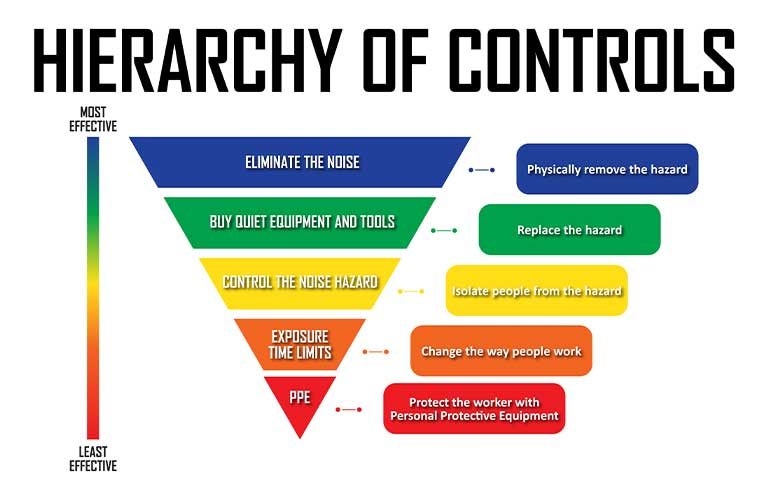Hearing protection
How can using the Hierarchy of Controls help with protecting workers from hazardous noise?

Responding is Matt Block, director of health and safety services, Magid, Romeoville, IL.
An estimated 22 million workers are exposed to noise levels that may adversely affect their hearing health, according to the Centers for Disease Control and Prevention.
Although earplugs may seem like the obvious solution, personal protective equipment alone isn’t the answer – in fact, it should be the last resort. Any safety manager can tell you that getting people to wear their hearing protection consistently is often a challenge, and time spent without those earplugs adds up to a potential lifetime of damaging exposure. So, it’s crucial to protect workers’ hearing from the top down.
A thorough noise protection program should incorporate these five steps.
1. Noise assessment
Start with a professional noise safety assessment of every area in your facility or jobsite. Include a plan to reassess periodically, especially if you’ve made any changes or additions to your equipment or processes.
2. Hierarchy of Controls
Evaluate your at-risk areas and apply the Hierarchy of Controls. This top-down approach starts with the broadest fixes and ends with PPE.
Elimination: Remove unnecessary noise exposure by performing proper equipment maintenance, reducing the speed of moving parts, using antivibration connectors, etc.
Substitution: Replace any loud, outdated machinery with newer, quieter technologies.
Engineering controls: Distance workers from noise hazards by isolating equipment or using blanket enclosures, door seals or sound-dampening sheets wherever possible.
Administrative controls: Rotate scheduling to move employees to quieter work areas on a regular basis.
PPE: Provide the best hearing protection for workers to use when they can’t avoid noisy environments. Be sure you’re providing everything needed, including earplugs, earmuffs, and even hard hats or welding helmets with built-in protection, depending on the application. If you’re unsure, consult a safety specialist.
3. Training and reminders
Forewarned is forearmed, so be certain everyone understands that hearing loss is permanent and that they need to protect themselves. This may take the form of formal training classes, safety reminder posters, videos to loop in your breakroom and frequent personal reminders at toolbox talks and throughout the day. One safety manager we spoke with would walk up to workers who were skipping their earplugs and start talking to them without making a sound, just moving his lips. It was his novel way to remind them of what they might experience if they continued neglecting their hearing protection.
4. Fit testing with comfort in mind
OSHA requires you to provide a variety of options for noise protection. Ask your safety supplier to visit your facility or jobsite to perform fit testing. They can advise you on what gear is necessary for each area and, because not every ear is alike, which type of earplug may be best for individual workers. They can also help teach workers how to property insert or use their hearing protection.
5. Regular hearing loss testing
Here too, OSHA mandates yearly, in-house hearing testing for employees exposed to noise above 85 decibels – and this testing helps ensure your efforts haven’t been in vain! Hosting an audiologist to both inform and educate workers and test that their hearing hasn’t been damaged might make a difference in someone’s life.
Bottom line: There’s too much at stake that can’t be fixed if you fail to address hearing protection. Make these five simple steps an integral part of your noise protection program.
Editor's note: This article represents the independent views of the author and should not be considered a National Safety Council endorsement.
Post a comment to this article
Safety+Health welcomes comments that promote respectful dialogue. Please stay on topic. Comments that contain personal attacks, profanity or abusive language – or those aggressively promoting products or services – will be removed. We reserve the right to determine which comments violate our comment policy. (Anonymous comments are welcome; merely skip the “name” field in the comment box. An email address is required but will not be included with your comment.)

